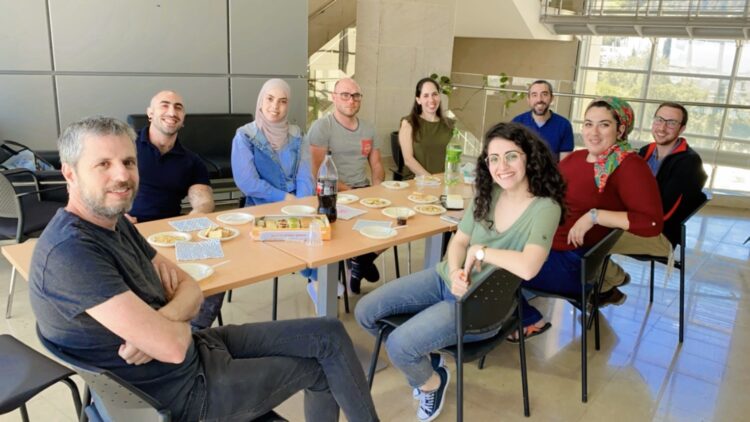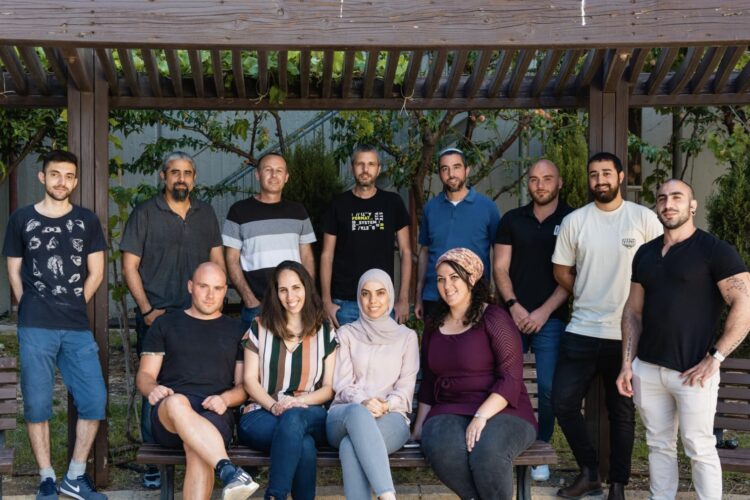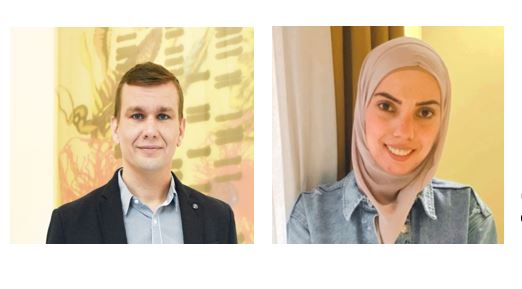SPOTLIGHT ON RESEARCH
PAPER OF THE MONTH APRIL 2022
We are pleased to announce that the winners of this APRIL article are the doctoral students Mariam Fokra and Dzmitry Mukha from Prof. Tomer Shlomi laboratory, whose article was published in Cell Metabolism.
On the occasion of the win, we asked them to provide us with some interesting details about the study, the path that led to the research, and also a bit about themselves.
Hi, could you introduce yourself in a few words?
Hi, I am Mariam Fokra, from Bu’eine-Nujedat village. I have a bachelor’s degree in biotechnology engineering from Technion, after which I left the academia for a short period to work in the industry. I have completed my master’s degree in biochemistry at the faculty of Life sciences at Tel Aviv University under the supervision of Prof. Joel Hirsch. Then I returned to the Technion for a doctorate in our faculty in Prof. Tomer Shlomi’s lab.
Hi, I am Dima, a former Ph.D. student of Tomer. Currently, I am a postdoc at Zachary Schug’s lab at the Wistar Institute (Philadelphia, PA, USA). I love science and sports. Enjoy reading books, running, cycling, and training at the gym. A father of four amazing kids.
Could you explain what Prof. SHLOMI’s laboratory is about?
Mariam & Dima: Tomer’s lab is all about how metabolism works in cancer cells, and especially how fast. We call the latter, the quantitative part, “metabolic flux.” It is now well-known, thanks to decades of research, that cancer cells develop metabolism distinct from what can be found in normal cells. This difference in cancer can be exploited for therapy. In fact, the first antimetabolites for cancer treatment were developed more than sixty years ago and they are still in use. The field has been growing very fast in the last two decades. Studying cancer metabolism requires virtually all modern molecular and cell biology methods, but what the lab is strong and passionate about is high-resolution mass spectrometry, isotopic tracing, and computational flux analysis.
Could you tell us about your current article/research, what was the main purpose of the research and what did you discover?
Mariam & Dima: The motivation for the study came from the fact that cancers have a high demand for one-carbon (1C) units generated in their mitochondria. Previous studies showed that many types of cancer are dependent on the primary source of 1C units, amino acid serine. We asked, “What about glycine?” – we knew that in some healthy tissues (not cancers), this amino acid could fulfill a similar role. There was no previous indication of glycine oxidation in cancer cell mitochondria before our project. Starting the exploration and measuring glycine oxidation flux in cancer cells was the beginning of the project that led us to the amazing discoveries described in the article.
We are the first to demonstrate and quantify glycine oxidation in cancer cell mitochondria. Basically, we introduced and validated a novel method accounting for the complexity of the metabolic network. Having a new tool, we showed that liver cancer cells tend to use glycine oxidation more than other cancers. Then, we found that glycine decarboxylase activity in liver cancer, besides its role in 1C metabolism, helps maintain mitochondrial function by supporting protein lipoylation. Silencing glycine decarboxylase impairs liver cancer cell proliferation and tumor xenograft growth in vivo.
Can you elaborate on the importance of the discovery? Why will this discovery serve you and what directions does it take? What is the application of the discovery (domains, solutions)?
Mariam & Dima: Our work has both basic and translational value. For basic science, we provided a rigorous method of flux estimation in cell mitochondria. We also showed that, if simplified, measurements could be misleading. The effect we found in liver cancer has great medical importance. Liver cancer is a highly lethal disease with only one FDA-approved chemical drug having very modest efficacy. Any step closer to the development of new therapeutic agents is a great achievement.
What drew you to the current lab/project?
Mariam: I have always been interested in cancer research. When I was looking for a lab for my doctoral studies, I came to know about Shlomi’s lab via advertisements on social media and I felt it is the right place for me. And I joined this specific project following Tomer’s recommendation, firstly as a part of a team and then independently.
Dima: The combination of disciplines, high-resolution mass spectrometry, isotopes, metabolic networks, tons of data, fighting for a good cause (curing cancer), and… people, of course! 🙂
When you are not “doing” science, what do you do?
Mariam: A career in scientific research does not leave much time to do things beyond, but, when possible, I go on trips, watch movies, also do sports. The short exits from the daily routine allow a fresher return to the laboratory work.
Dima: Most importantly, I am trying to be a better dad: spending time with kids.
When you grow up what do you want to be?
Mariam: I would love to advance professional growth in my career, and deepen my knowledge, Moreover, to find a job in the relevant fields.
Dima: A life scientist. Now I can say more specifically: I probably meant “cancer biologist.”
what are your plans for the future of your career?
Mariam: Continue to research topics that interest me in academia or industry.
Dima: Never give up and continue advancing our knowledge in cancer biology.
Group photo of Prof. Tomer Shlomi’s Lab


A link to the full article:https://www.cell.com/cell-metabolism/fulltext/S1550-4131(22)00133-4
A link to Prof. Shlomi’s lab site: https://metsysbio.net.technion.ac.il/
To Prof. Shlomi’s page: https://biology.technion.ac.il/en/member/shlomi/








